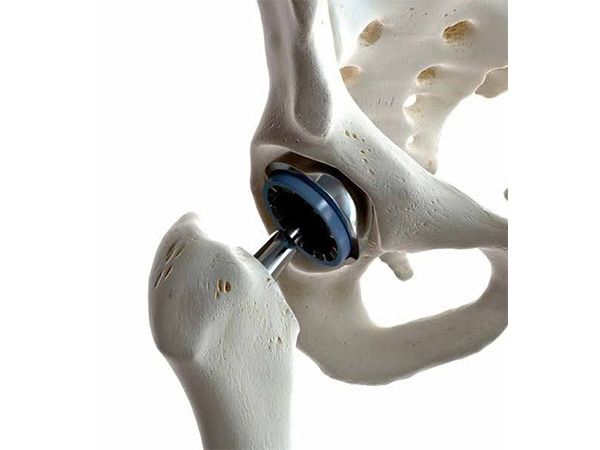Press Release
Manupatra Hosts Nationwide Law Teachers Conclave to Strengthen Legal Education

In its continued commitment to supporting the legal fraternity, Manupatra, a pioneer in legal technology, organized the Law Teachers Conclave across India’s East, West, North, and South regions in collaboration with leading law schools. This initiative aimed to enhance learning, development, and digital transformation in legal education.
By hosting the conclave at regional levels, Manupatra sought to ensure accessibility and inclusivity for educators nationwide. The conclaves were organized in partnership with:
1. West Region Law Teachers Conclave – in association with GNLU, Gandhinagar
2. South Region Law Teachers Conclave – in association with R.V. University, Bengaluru
3. North Region Law Teachers Conclave – in association with NLU, Delhi
4. East Region Law Teachers Conclave – in association with NLU, Odisha
The conclaves witnessed participation from over 1,200 law educators, including full-time, part-time, ad-hoc, and visiting faculty members from across India. These events were supported by the hosting universities and industry bodies such as SILF and GCAI.
With over 70 speakers and resource persons, the conclaves featured insightful discussions on a wide range of topics under the theme “Empowering Legal Educators for Tomorrow.”
Key Takeaways from the Conclave
The deliberations at the Manupatra Law Teachers Conclave highlighted critical challenges and advancements needed in legal education, including:
1. Integration of Technology in Legal Education – Law faculties require training in digital resources and innovative teaching methodologies to enhance student learning outcomes.
2. Pedagogical Enhancements – There is a need to transition from traditional lecture-based teaching to interactive and experiential learning, such as moot courts, case studies, and interdisciplinary approaches.
3. Practical Exposure and Industry Collaboration – Faculty members should engage more with the legal industry, including law firms, the judiciary, and corporate legal teams, to align academic teachings with real-world practices.
4. Global Competencies and Cross-Disciplinary Learning – Law schools must prepare students for international legal frameworks and develop skills in analytical thinking, project management, and professional ethics.
5. Academic Social Responsibility (ASR) – A call for stronger collaboration between academia, industry, and government to foster holistic legal education.
Recommendations for a National Capacity Building Program
In response to these observations, Manupatra is proposing a National Capacity Building Program for Law Faculty, emphasizing:
* Regular faculty development workshops and certification programs endorsed by the Bar Council of India (BCI) and University Grants Commission (UGC).
* Workshops and training sessions focusing on digital literacy, emerging legal fields, and contemporary teaching methodologies.
* A national-level digital resource hub offering curated content, research materials, and interactive teaching guides.
* Exchange programs and global collaborations to expose law faculty to international best practices.
* Mentorship programs where senior legal educators and industry experts guide young faculty members.
* Establishment of legal education research centers to enhance teaching methodologies in law schools.
* Secondment programs for law faculty to gain practical experience by working with law firms and corporations, which they can integrate into their teaching.
A well-structured, government-backed Capacity Building Program will significantly improve the quality of legal education in India and contribute to producing competent legal professionals who uphold the rule of law effectively.
Manupatra urges all stakeholders to consider this recommendation and initiate the necessary discussions to develop a framework for the Capacity Building Program. Manupatra remains committed to collaborating and providing further insights to support this important initiative.
More details https://www.manupatracademy.com/home/event
About Manupatra
Manupatra, a leading legaltech company, has been at the forefront of innovation in law and technology since 2000. Its flagship online legal research platform is the preferred tool for legal professionals, offering comprehensive legal research solutions. Manupatra also provides a suite of legal operations solutions, including contract lifecycle management, compliance management, case management, notice management, and litigation tracking.
For media inquiries, please contact: Priyanka Patel Manupatra
Email: ppatel@manupatra.com
Press Release
Tog and Trim: India’s Homegrown Clothing Brand That’s Redefining Everyday Fashion

Tog and Trim, The Indian Clothing Brand Redefining Everyday Fashion. In a market full of passing trends and fast fashion, one homegrown brand is making a lasting impact–quietly winning hearts with clothes that feel just right. Meet Tog and Trim, an Indian clothing label that stands for comfort, quality, and affordability without ever compromising on style.
The Journey: From a Small Town Dream to a Growing Fashion Movement
The story of Tog and Trim began in October 2022, not in a big fashion capital, but in the small town of Etawah, Uttar Pradesh. Its founder and co-creator, Amitosh Mishra, has always had a passion for fashion–especially for clothing that feels great and looks even better.
Amitosh’s vision was simple yet strong: to create everyday fashion that doesn’t burn a hole in your pocket. With a deep understanding of what Indian consumers really want–durable, stylish, and comfortable clothing at a fair price–he turned his idea into reality. Today, Tog and Trim has fulfilled over 10,000+ orders across India, building a loyal customer base along the way.
And here’s the best part–throughout this journey, they’ve maintained zero customer disappointments, a rare feat in today’s world of online shopping.
What Makes Tog and Trim Different?
In India, where fashion is as diverse as its people, finding the right mix of comfort and style can be a challenge. But Tog and Trim has nailed that balance.
From basic t-shirts and classic polos to oversized statement tees, joggers, and shorts–the brand has something for everyone, no matter your vibe.
Let’s break down why this brand stands out:
– Made in India, for India
Every piece is designed and manufactured in India, keeping Indian climates, body types, and tastes in mind. Whether you live in Mumbai’s humidity or Delhi’s winter, Tog and Trim has you covered.
– Comfort Meets Quality
From heavy-weight 240 GSM oversized t-shirts to dry-fit polos, the brand uses premium fabrics that feel good and last long. You’ll never find rough stitches, itchy tags, or cheap prints here.
– Affordable for All
Tog and Trim believes that great fashion should be for everyone. That’s why they offer high-quality pieces at budget-friendly prices, proving that you don’t need a luxury tag to wear something you love.
– Unisex, Trendy & Versatile
Whether you’re into anime-inspired prints, solid classics, gym-ready fits, or cute crop tops–men and women both love what Tog and Trim has to offer.
What’s Hot Right Now?
Right now, their oversized t-shirt collection is turning heads–offering designs from anime graphics to clean minimalist looks. Oversized fits are all the rage on social media, and Tog and Trim was one of the early movers in India to bring this trend to the masses.
Their dry-fit polo shirts with zipper details are also top-sellers–ideal for everything from your morning workouts to evening hangouts. Plus, their bottomwear like joggers and shorts are made from soft, breathable materials–perfect for Indian weather.
Designed for Every Season
India’s seasons are extreme–and Tog and Trim gets that. While their cotton-based tees and crop tops are ideal for scorching summers, their 300 GSM hoodies and sweatshirts are your perfect winter essentials. One brand. All weather.
A Brand That Cares
Beyond just clothing, Tog and Trim is built around community. The team personally handles customer feedback, offers prompt support, and even surprises returning customers with handwritten notes and small perks.
For example, they offer an extra 5% off on all prepaid orders, with no minimum cart value–just because they appreciate the love and trust of their buyers.
Looking to the Future
Fast forward to 2025, Tog and Trim is no longer just a clothing brand–it’s a movement built by passionate people like Amitosh and his small but driven team. Their dream? To become India’s go-to destination for everyday fashion.
Big plans are already in motion–from launching new collections for women’s fashion, expanding their gymwear line, and collaborating with creators and communities across India.
Final Words
Tog and Trim is proof that when passion meets purpose, magic happens. What started as a dream in a small town is now a name trusted by thousands. And with Amitosh Mishra leading the way, there’s no doubt this Indian brand is just getting started.
Whether you’re a college student, a fitness freak, a working professional, or someone who just wants to feel confident in what they wear–Tog and Trim is for you.
And here’s a little heads-up for all the fashion lovers out there–keep an eye out for their new collection. Word is, it’s going to be their BIGGEST drop yet, and trust us, you don’t want to miss it!
Shop now at www.togandtrim.com
Join the growing tribe of Indians choosing comfort, quality, and style–without the heavy price tag.
Press Release
Official Launch of the Society for Advanced Research in Plant Science (SARPS)

Date: 22/04/2025
Location: Narmadapuram (MP)
With a shared vision to advance plant-based science for a sustainable and healthier world, the Society for Advanced Research in Plant Science (SARPS) is officially launched as a premier platform for high-impact research, collaboration, and innovation. SARPS brings together a multidisciplinary network of scientists, educators, researchers, and professionals committed to exploring the vast potential of plant science for global benefit.
SARPS envisions a future where plant research is central to solving real-world challenges, ranging from ecological preservation and public health to agricultural resilience and industrial innovation.
Core Objectives of SARPS:
1) To promote original and applied research in plant biology, medicinal plants, herbal drug development, phytochemistry, ethnobotany, nanobiology, and bioresource conservation.
2) To foster innovation in plant-based therapeutics, nanoformulations, and sustainable technologies rooted in traditional wisdom and modern biotechnological tools.
3) To organize national and international conferences, symposia, capacity-building workshops, and research fellowships to empower the scientific community.
4) To support and mentor young researchers, students, and early-career scientists through academic and professional development programs.
5) To promote collaborative projects between academia, industry, government bodies, and global institutions for real-world impact.
6) To advocate for science-informed policies and practices in agriculture, healthcare, conservation, and public health.
Messages from Founding Members and Advisors
Dr. Ruchita Shrivastava (President, SARPS):“SARPS symbolizes a commitment to excellence in plant science and its limitless applications—from healing traditions to modern nanobiotechnology. This is our step toward a healthier planet.”
Dr. Sanjeeb Kumar Nath (Advisory Board Head):“The Society creates a bridge between centuries-old herbal wisdom and emerging scientific technologies. SARPS will play a pivotal role in shaping research that is both rooted and revolutionary.”
Prof. Chandra Prakash Shukla, (National Advisor):“We aim to build a vibrant community where innovation thrives and knowledge grows. SARPS is a home for researchers passionate about making meaningful contributions to science and society.”
Dr. Farzana Tasneem MI , (Secretary SARPS):The SARPS aims at the global perspective of Research, Innovations with societal impact to conservation of biodiversity and impact on youth to mould themselves in the future endeavours in herbal drugs or conservation of rare medicinal plants, SARPS will actively support projects that define the future of plant-based research.”
Dr. Suhaib Malik, (Deputy Secretary,SARPS):“As a founding team, our aim is to cultivate a space for emerging scientists and researchers to thrive. SARPS is committed to fostering inclusion, mentorship, and impactful research that shapes the future.”
The inaugural ceremony, held at Narmadapuram (MP), was attended by leading scientists, institutional representatives, and policy stakeholders. The event featured the official unveiling of the Society’s charter, emblem, and future strategic roadmap.
Membership is now open to individuals and organizations involved in research, education, or practice in plant sciences and allied domains.
To learn more or to become a member, please visit: www.thesarps.com
Issued by:
Dr. Ruchita Shrivastava
President – SARPS Society for Advanced Research in Plant Science (SARPS)
Contact – +91 – 9131233389 (M)
Email – info@thesarps.com| Website – www.thesarps.com
Press Release
Hip Replacement Recovery: Q&A with a Hip Specialist

There are a lot of important aspects when it comes to recovery after surgery, especially a major one such as hip replacement How should you prepare? What challenges should you expect? Will you need a caregiver?
All of this takes careful planning among your healthcare team, you and your family members. Joint Replacement surgeon Dr Gaurav Gupta from Jhansi, an expert in robotic joint replacements, answers some common questions and shares tips about hip replacement recovery and rehabilitation.
When can I go home after a hip replacement?
“Most patients can start walking and can go home a few days after the surgery,” says Dr Gaurav Gupta from Jhansi. Most people don’t need bed rest. In fact, moving your new joint helps in faster recovery.
If you have a pre-existing medical condition (a heart or lung condition that needs monitoring), or people who have had complex surgeries or lack support at home may have to be in bed for longer.
Will I need to use a walker at first?
Your healthcare team, which includes your surgeon, physiotherapists and primary care doctor, will evaluate the need for any assistive devices. To reduce falls, you might need a cane or a walker if you feel unbalanced walking on your own, but it’s generally not necessary to use them.
When will my hip incision heal?
“The incisions for a hip replacement surgery nowadays are very small” explains Dr Gaurav Gupta. The incision is covered with a dressing and takes about six weeks to heal. During this time, to reduce the risk of infection, bathing should be put off until the wound fully heals, say about two weeks.
How soon does rehabilitation start after the hip surgery?
“Patients will have physical therapy before the hip replacement surgery, and then work with a physical therapist right after the surgery to reinforce exercises before they go home,” says Dr Gaurav Gupta, Joint Replacement Surgeon. Rehabilitation will continue a few days after the surgery, with some home exercises.
Rehabilitation begins with getting used to regular movements and practicing daily activities, like getting out of bed or a chair, and progresses to practicing more difficult tasks, such as climbing stairs and getting in or out of the car.
Muscle strength plays a big role in being able to perform these and other tasks. This is why resistance training of hip muscles and knee muscles in the legs is a major component of rehabilitation.
Hip and Knee Replacement at Jhansi Orthopaedic Hospital
The JOH Hip and Knee Replacement program features a team of orthopaedic specialists highly skilled in joint replacement procedures. Our team at Jhansi will guide you through every step, from pre-surgical education to postsurgical care and physical therapy. Our goal is to return you to your desired level of activity as soon as possible.
What is considered a “normal” amount of pain after a hip replacement surgery?
Some swelling and initial pain at the joint are normal after hip replacement. To help reduce pain:
Take time to rest between therapy sessions. Ice the leg and the incision site.
Take anti-inflammatory medications, after consulting with your doctor, to help with these symptoms.
“Keeping the leg elevated above the heart when you lay down can also help the swelling to recede,” advises Dr Gaurav Gupta
It’s important to pay attention to your pain levels. If you feel like you are consistently at a 6 or more on a 1-10 pain scale, mention it to your doctor, because it could be a sign of infection or another complication. As you continue physical therapy, your pain levels should slowly decrease to about 1 or 2 in 12 weeks after the hip replacement.
How long does it take to recover after a hip replacement?
“On average, hip replacement recovery can take around two to four weeks, but everyone is different,” says Dr Gaurav Gupta. It depends on a few factors, including how active you were before your surgery, your age, nutrition, preexisting conditions, and other health and lifestyle factors.
“Achieving a certain level of activity before you have the surgery can help you bounce back more quickly,” shares Dr Gupta. “We use a regimen called prerehabilitation, or prehab, to help patients get in a physical shape that will set them up for a successful recovery.”
How soon can I return to regular activities after a hip replacement?
The goal of physical therapy is to get you back to your normal life, whether it’s going to work, playing with kids, or engaging in your favorite sport or hobby. Depending on the amount of physical activity a task requires, the amount of time it will take to be able to perform that task differs.
Driving. If you had surgery on your right hip, it may take up to a month to be able to drive safely again. If it was your left hip, then you might be back in the driver’s seat in one or two weeks. Start in a parking lot and slowly move to rural roads, working your way up to the highway. Taking medications that may impair your coordination, such as opioids, might delay how soon you can go back to driving.
Work. If you have a desk job with minimal activity, you can return to work in about two weeks. If your job requires heavy lifting or is otherwise tough on the hips, it is recommended to take off about six weeks to recover.
Sports. You should wait about six weeks to get back in the game. Before getting into a pool, you should also wait about six weeks until the incision completely heals.
Sexual Activity. You can return to sexual activity whenever you feel comfortable.
What could slow down my recovery?
“As with any surgery, there is some risk of complications during and after a hip replacement, which may include infection at the incision site, bone fractures and hip dislocations,” explains Dr Gaurav Gupta. If you notice a fever, drainage from the incision site, difficulty moving your hip or severe pain that is not relieved by your medication, contact your doctor immediately.
Taking rehabilitation at a comfortable pace and avoiding sudden, sharp movements can help prevent dislocations and falls that may delay the recovery.
How long will my hip replacement implant last?
Unlike older implants that were metal, modern hip prosthetics are made of a combination of metal, plastic and ceramic parts, so they are more durable and cause fewer issues. These implants can last 20 to 30 years, and the risk of failure and the need for repeat surgeries is low.
How long after replacing one hip should I wait to replace the other?
“If you suffer from severe arthritis in both hips, you could get both joints replaced at the same time (double hip replacement). This might actually be safer and lead to quicker recovery in some patients,” says Dr Gaurav Gupta from Jhansi Orthopaedic Hospital.
Recovery is actually shorter but may require double the effort, because you would need to strengthen both legs at the same time. It may also be more challenging to get around the house initially, so you might need more support at home.
If you want to have two separate hip replacement surgeries, it is best to wait at least six weeks between the replacements to lower the risk of blood clots.
Visit us on www.docgauravgupta.com, www.joh.co.in
-

 Health4 months ago
Health4 months agoHow to Create a Personalized Self-Care Plan
-

 News3 months ago
News3 months agoMeta India Apologises for Zuckerberg’s Remark on India Elections; Nishikant Dubey Says Issue Is ‘Closed’
-

 News3 months ago
News3 months agoDrunk Official’s Car Kills Minor Girl, Injures Two in Uttarakhand
-

 Press Release3 months ago
Press Release3 months agoSportingTwist: Ushering A New Era for Sports Platform
-

 Press Release3 months ago
Press Release3 months agoJakarta Murugan Temple: A New Spiritual Landmark for Unity and Heritage Marking the Maha Kumbhabhishekam Ceremony on 2 February 2025
-

 Sports4 months ago
Sports4 months agoHow Climate Change is Affecting Outdoor Sports: A Comprehensive Analysis
-

 Health4 months ago
Health4 months agoTop 5 Annual Health Screenings Everyone Should Consider
-

 Fashion4 months ago
Fashion4 months agoThe Ultimate Guide to Dressing for Your Body Shape






